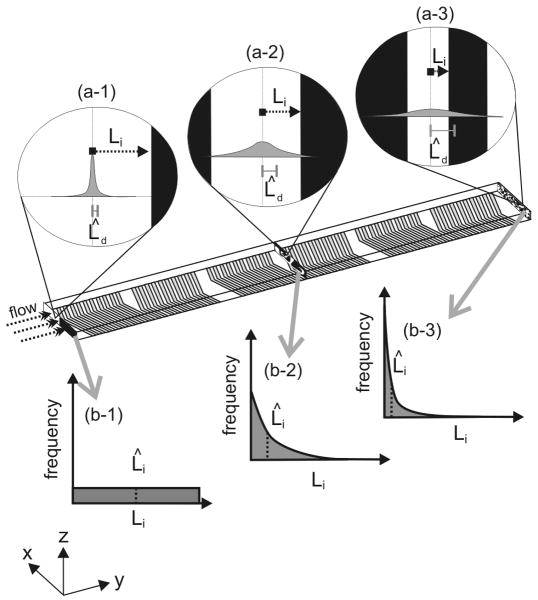Figure 2.
Illustration of mixing behavior of two fluids in the SHM. Each infinitesimal volume element of the fluid is a particular distance, Li, from the interface, and the solute originally contained in the volume diffuses a distance, Ld, toward or away from the interface. Initially, the solute is unlikely to have diffused far (a-1), and the side-by-side inputs give a uniform distribution of Li (b-1). As fluid moves down the mixer, the solute is likelier to have traveled farther (a-2 and a-3). The fluid is stretched and folded into increasingly thin layers (a-2 and a-3) similar to a baker's transformation, except the complexity of the rotational flows and reorientations cause Li to adopt an exponential distribution (b-2 and b-3). Mixing results from increasing the mean diffusion distance, L̂d, and decreasing the mean distance to an interface, L̂i.

